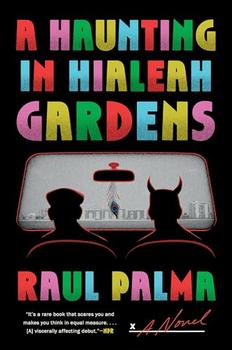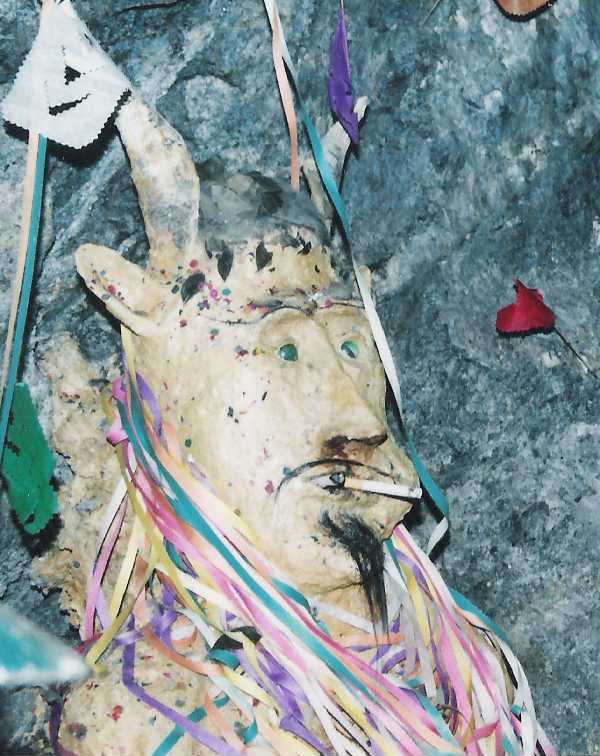Summary | Excerpt | Reading Guide | Reviews | Beyond the Book | Read-Alikes | Genres & Themes | Author Bio

A Novel
by Raul PalmaThis article relates to A Haunting in Hialeah Gardens
 During the height of the Spanish colonization of Latin America in the 16th and early 17th centuries, conquistadors forced enslaved workers to extract vast amounts of silver from mines in Cerro Rico ("rich hill" in Spanish) near the city of Potosí (in what is now Bolivia), which once held the largest silver deposits on Earth. As many as eight million enslaved Quechan and African people died there. According to the Guardian, Cerro Rico "bankrolled Spain's colonial empire, the Spanish Armada and the European Renaissance." And it wasn't just that it provided currency; it created it. Author Jack Weatherford observes that Potosí was "the first city of capitalism … for it supplied the primary ingredient of capitalism – money," and states, "Potosí made the money that irrevocably changed the economic complexion of the world." This history makes the city's appearance particularly fitting in Raul Palma's A Haunting in Hialeah Gardens, a novel driven in part by questions of inequality and indebtedness.
During the height of the Spanish colonization of Latin America in the 16th and early 17th centuries, conquistadors forced enslaved workers to extract vast amounts of silver from mines in Cerro Rico ("rich hill" in Spanish) near the city of Potosí (in what is now Bolivia), which once held the largest silver deposits on Earth. As many as eight million enslaved Quechan and African people died there. According to the Guardian, Cerro Rico "bankrolled Spain's colonial empire, the Spanish Armada and the European Renaissance." And it wasn't just that it provided currency; it created it. Author Jack Weatherford observes that Potosí was "the first city of capitalism … for it supplied the primary ingredient of capitalism – money," and states, "Potosí made the money that irrevocably changed the economic complexion of the world." This history makes the city's appearance particularly fitting in Raul Palma's A Haunting in Hialeah Gardens, a novel driven in part by questions of inequality and indebtedness.
While Spanish colonization in Potosí is technically a thing of the past, the exploitative system of extraction continues, and the local cooperatives that now mine the mountain employ both adult and child laborers (who technically work there willingly but lack other options) in conditions that are still extremely hazardous, mainly making profits for multinational corporations rather than themselves. In Palma's novel, protagonist Hugo remembers being a child miner with his brother Victor in the "red mountain," and leaving offerings for the god El Tío ("the uncle"):
"Outside the mountain, the children belong to God. When they cry and rejoice and bask in the sunlight, they are basking in heaven. But in the mines, the children are the property of El Tío. He can be merciful. He protects those who bring him offerings, who do not cry or complain, who are productive, who will work into the twilight even if there is school the next day."
El Tío haunts the inside of the mines in the form of statues that depict him as a horned being with an erect penis. His devil-like nature points to the area's legacy of Spanish Catholicism, though the miners' worship of him is generally strictly separated from their religious lives outside of their work. He is believed to be responsible for all that takes place within the mountain — good or bad. Local miner and historian Jose Ticona believes that the Spaniards introduced the concept of El Tío to the people they enslaved as a way of controlling them.
However, miners have made El Tío their own. They make daily offerings to him in the hopes that he will protect them from the mountain's dangers — many die in cave-ins while others are killed by silicosis, a serious lung disease caused by inhaling silica dust. In addition to worshipping El Tío to prepare themselves for the deadly work, miners also often drink strong alcohol — sometimes straight ethanol — and chew coca leaves (the active ingredient in cocaine), both of which are frequently left with the statues as an offering. It is common to place lit cigarettes in the god's mouth. In Palma's novel, Hugo and Victor do their best to placate El Tío with what they have: "a stick of gum, a bottle of water, a half-smoked cigar."
While still heavily reliant on mining as an industry, Potosí is now known as a tourist destination and has been named a UNESCO World Heritage site for being "the one example par excellence of a major silver mine in modern times." UNESCO has considered the city endangered since 2014, citing concerns about the stability of the summit of the mountain, which has in some places already collapsed. While the foundation also expresses concerns about the threat current mining practices pose to human lives, and while tourism has an important role to play in providing alternative employment to locals, this assessment calls attention to the layered irony of how the survival of Potosí, a city that has already been robbed for astronomical profit elsewhere, is contingent upon what value it still has to offer the rest of the world — the preservation of a supposedly historical time of suffering that never really ended.
El Tio statue in Potosí (1993), photograph by SHIBUYA K. (CC BY-SA 3.0)
Filed under Places, Cultures & Identities
![]() This "beyond the book article" relates to A Haunting in Hialeah Gardens. It originally ran in November 2023 and has been updated for the
October 2024 paperback edition.
Go to magazine.
This "beyond the book article" relates to A Haunting in Hialeah Gardens. It originally ran in November 2023 and has been updated for the
October 2024 paperback edition.
Go to magazine.
I always find it more difficult to say the things I mean than the things I don't.
Click Here to find out who said this, as well as discovering other famous literary quotes!
Your guide toexceptional books
BookBrowse seeks out and recommends the best in contemporary fiction and nonfiction—books that not only engage and entertain but also deepen our understanding of ourselves and the world around us.